Simplified Model Definitions
The so-called theory module contains the basic tools necessary for decomposing the input model into simplified model topologies and using the output of the decomposition to compute the theoretical prediction for a given experimental result.
The applicability of SModelS is currently restricted to models which contain a Z2 symmetry (R-parity in SUSY, K-parity in UED, …). This is required in order to provide a clear structure for the simplified model topologies appearing during the decomposition of the input model. Below we describe the basic concepts and language used in SModelS to describe the simplified model topologies.
Elements
A simplified model topology representing a specific cascade decay of a pair of BSM states produced in the hard scattering is called an element in the SModelS language. Elements contain the Z2-even particles appearing in the cascade decay and the BSM (Z2-odd) states which have decayed or appear in the last step of the decay. A representation of an element is shown below:
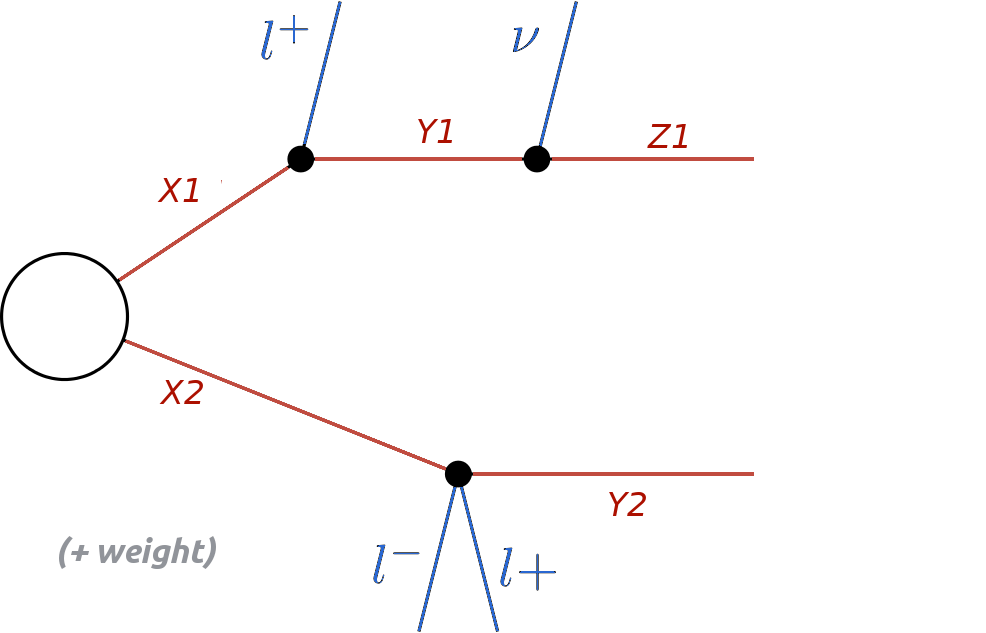
An element may also hold information about its corresponding weight (cross section times branching ratio times efficiency).1 The overall properties of an element are illustrated in the scheme below:
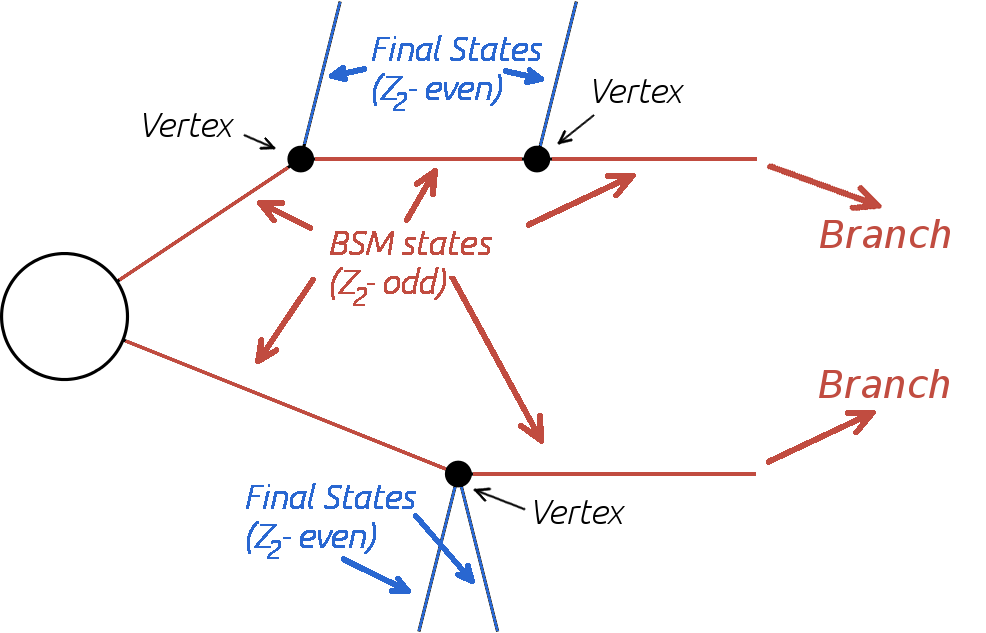
SModelS works under the inherent assumption that, for collider purposes, all the essential properties of a BSM model can be encapsulated by its elements. Such an assumption is extremely helpful to cast the theoretical predictions of a specific BSM model in a model-independent framework, which can then be compared against the corresponding experimental limits. From v2.0 onwards elements hold particles and two elements will be considered equal if both their topological structure and particles are equal. Below we describe in more detail the element properties and their implementation in SModelS.
Elements are described by the Element Class
Particles
The basic building block of simplified model elements are particles, which can be both SM (e.g. \(l^+,l^-,\nu\) in the figure above) or BSM states (e.g. \(X1,X2,Y1,Y2,Z1\) in the figure above). The BSM particles are defined by the input model (see model in parameters file), while the SM particles are defined in SMparticles.py . All particles must be assigned a Z2 parity and can have a flexible number of attributes, such as mass, spin, electric charge, etc. Two particles are considered equal if all their shared properties are equal.
Inclusive or generic particles are introduced by leaving one or more of their properties undefined. For instance, a Z2-even particle with electric charge -1, spin 1/2 but undefined mass will be matched to electrons, muons and taus. This is useful when defining generic simplified models (elements) in the Database. All inclusive particles used by the Database are separately defined in databaseParticles.py . Examples are:
‘l’ for electrons, and muons,
‘L’ for electrons, muons, and taus,
‘q’ for u-, d-, and s-quarks,
‘jet’ for u-, d-, s-, c-quarks and gluons
‘anyOdd’ for any Z2-odd particle
‘*’ for any Z2-even particle
Particles are described by the Particle Class
Vertices
Each Z2-odd decay is represented by a vertex containing the outgoing states (one Z2-odd state and the Z2-even particles), as shown in the scheme above.
Vertices are described by the ParticleList Class
Branches
A branch is the basic substructure of an element. It represents a series of cascade decays of a single initial Z2-odd state. The diagram below illustrates an example of a branch.
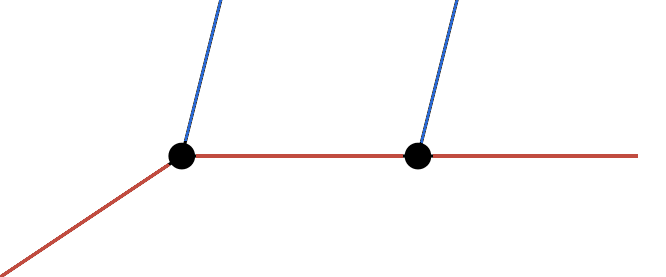
The structure of each branch is fully defined by its number of vertices and the number of particles coming out of each vertex.
Branches are described by the Branch Class
Element Representation: Bracket Notation
The structure and Z2-even states of elements can be represented in a compact and textual form using a nested bracket notation. The scheme below shows how to convert between the graphical and bracket representations of an element:
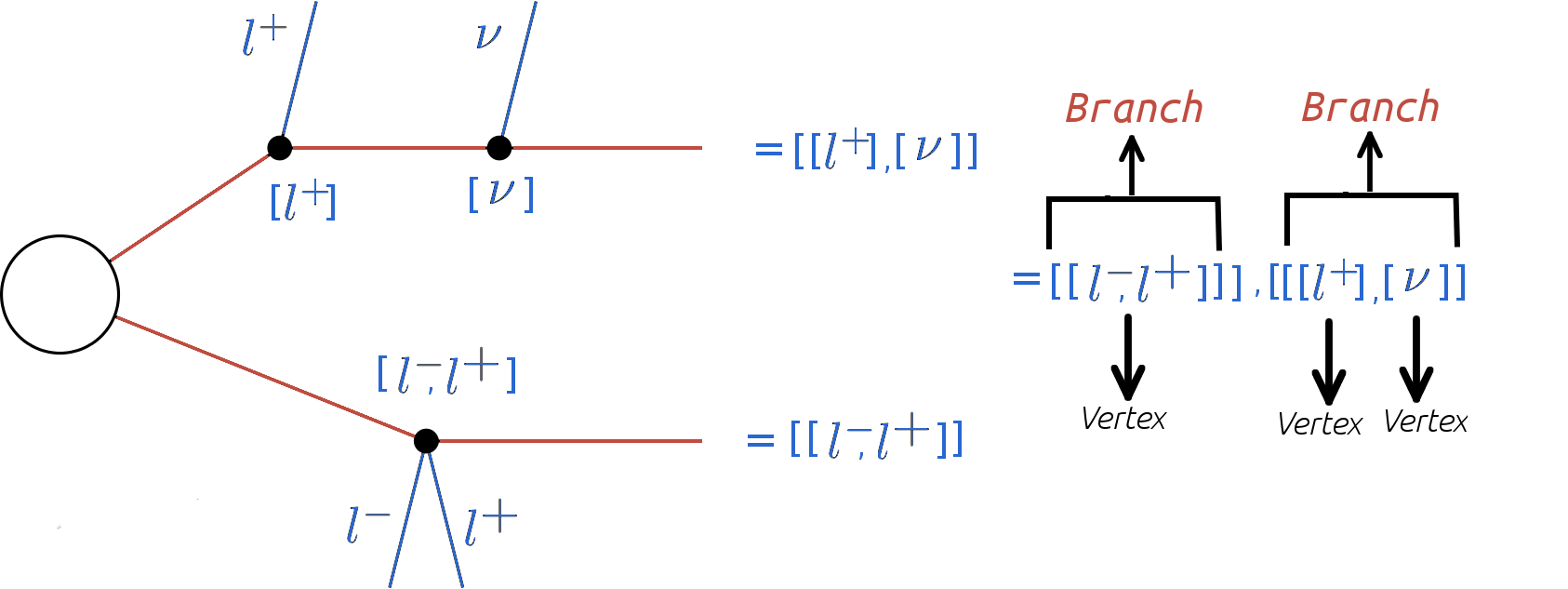
The brackets are ordered and nested in the following way. The outermost brackets correspond to the branches of the element. The branches are sorted according to their size (see element sorting) and each branch contains an ordered list of vertices. Each vertex contains a list of the Z2-even particles (represented by their label and sorted alphabetically) coming out of the vertex. Schematically, for the example in the figure above, we have:
element = [branch1, branch2]
branch1 = [vertex1]
vertex1 = [l+,l-]
branch2 = [vertex1,vertex2]
vertex1 = [l+]
vertex2 = [nu]
Although the above scheme can be useful and provides a simplified representation of an element, it provides no information about the Z2-odd (BSM) states appearing in the element. However, information about a specific property of Z2-odd states can also be represented in a nested bracket notation. For instance, all the masses of the BSM states in a given element can be represented as shown below:

Similar arrays can be built with any property (width, charge, spin, etc) of the Z2-odd particles in an element.
Topologies
It is often useful to classify elements according to their overall structure or topology. Each topology corresponds to an undressed element, removed of its specific particle states. Therefore the topology is fully determined by its number of branches, number of vertices in each branch and number of particles coming out of each vertex. An example of a topology is shown below:
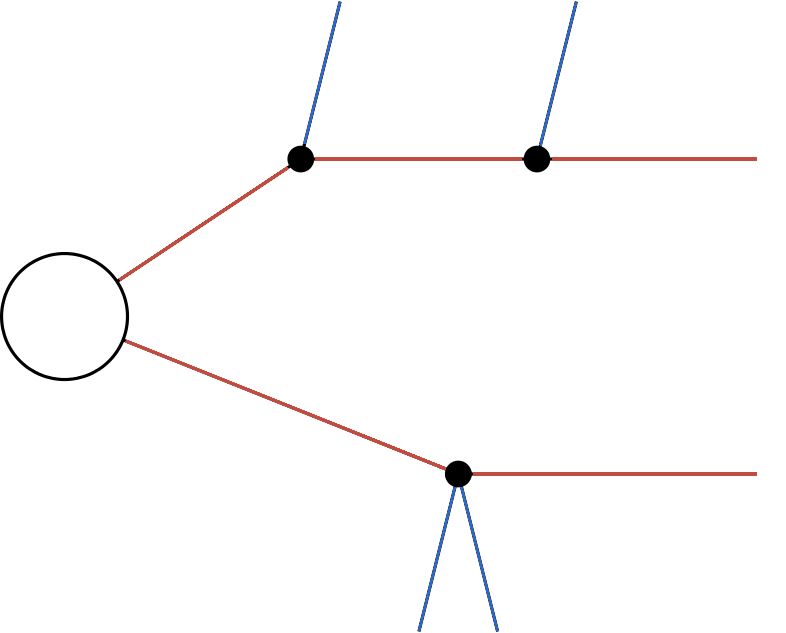
Within SModelS, elements are grouped according to their topology. Hence topologies represent a list of elements sharing a common basic structure (same number of branches, vertices and final states in each vertex).
Topologies are described by the Topology Class
- 1
In order to treat the UL and EM map results on the same footing, SModelS applies a trivial binary efficiency to elements for UL-type results as will be explained in detail later.